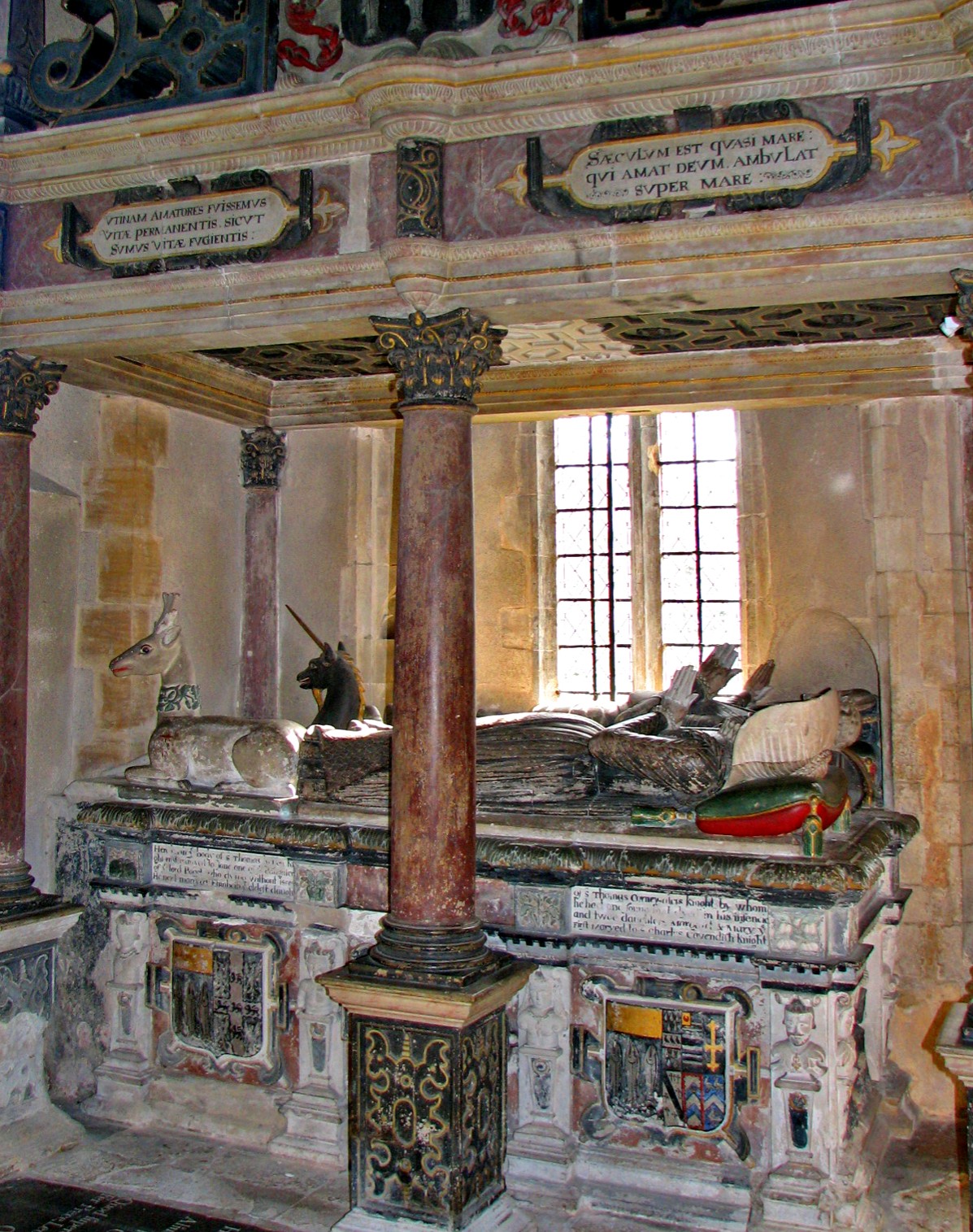Church Of St John Lateran, Hengrave on:
[Wikipedia]
[Google]
[Amazon]
The Church of St John Lateran, Hengrave is the former  Local antiquarian
Local antiquarian
The History and Antiquities of Hengrave in Suffolk
' (1822) by the historian
File:John Le Kreux (1822) Tomb of Margaret Countess of Bath, Hengrave Church.pdf, Tomb of Margaret Countess of Bath (Le Keux)
File:J. C. Buckler (1822) Fresco of St Christopher, Hengrave Church.jpg, Fresco mentioned by Samuel Tymms, destroyed by damp before 1852
File:John Le Keux (1822) Tomb of Thomas Darcy, Hengrave Church.jpg, Tomb of Thomas Darcy (died 1614) son of
parish church
A parish church (or parochial church) in Christianity is the church which acts as the religious centre of a parish. In many parts of the world, especially in rural areas, the parish church may play a significant role in community activities, ...
of Hengrave, Suffolk
Suffolk () is a ceremonial county of England in East Anglia. It borders Norfolk to the north, Cambridgeshire to the west and Essex to the south; the North Sea lies to the east. The county town is Ipswich; other important towns include Lowes ...
. In 1589 this parish was consolidated with that of adjacent Flempton
Flempton is a village and civil parish in the West Suffolk district of Suffolk, England. It is on the A1101 road 5 miles NW from Bury St Edmunds.
Flempton takes its name from the Flemings who came from Flanders and settled the area in Anglo ...
, and since then it has solely been used as a place of interment for the residents of Hengrave Hall
Hengrave Hall is a Grade I listed Tudor manor house in Hengrave near Bury St. Edmunds in Suffolk, England and was the seat of the Kitson and Gage families 1525–1887. Both families were Roman Catholic recusants.
Architecture
Work on the hou ...
, who have ensured the church is properly maintained. The church is a Grade I listed
In the United Kingdom, a listed building or listed structure is one that has been placed on one of the four statutory lists maintained by Historic England in England, Historic Environment Scotland in Scotland, in Wales, and the Northern Irel ...
building.
 Local antiquarian
Local antiquarian Samuel Tymms
Samuel Tymms (27 November 1808, Camberwell - 29 April 1871 Lowestoft) was an English antiquarian, topographer, printer and publisher. He started his work in Bury St Edmunds, Suffolk in the nineteenth century. Tymms Samuel: Dictionary of National B ...
described the church at a meeting of the Bury and West Suffolk Archaeological Institute
The Bury and West Suffolk Archaeological Institute was a victorian organisation established in 1848 in Bury St Edmunds, Suffolk. It had a lively existence for five years until 1853, when the local activities concerning antiquaries and natural hi ...
held at Hengrave Hall on 22 July 1852:
:"It is a small edifice with a round tower and south porch. The tower, now completely enveloped in ivy, is the oldest portion of the building, though one of the latest edifices of the kind. Its diameter is larger than is usual in these peculiar towers. The south porch, which remains nearly in its original state, was built, as an inscription over the inner doorway tells us, by the de Hemegraves, at the end of the 14th or beginning of the 15th century, when the church was probably rebuilt by them. The embattled parapet on the south side of the church exhibits some interesting details. Upon one of the battlements are the arms in flint work of de Hemegrave, Argent, a chief indented Gules; on another those of St. Edmund's Bury, a crown pierced with two arrows; and on a third the monogram IHS in Greek characters-between the initials of Mary and Joseph. From a fragment of an inscription still remaining, this ornamental work would appear to have been made by one John Hull, of London, and who may probably have been interred in this church. The fresco painting of St. Christopher carrying the infant Jesus, engraved in the ''History of Hengrave'', has since been destroyed by damp.
:The monumental memorials are numerous. One to Margaret, Countess of Bath, and her three husbands, has the effigies of herself and Lord Bath, on an altar tomb, under a heavy flat canopy supported by six pillars, and that of Sir Thomas Kytson, her first husband, on a step in front of her tomb. A monument of corresponding form and size, but more elegant in design, has the effigies of the second Sir Thomas Kytson and his two wives. A mural tablet records the death and displays the effigy in a kneeling posture of Thomas-Darcy, the hope of the noble house of Rivers; and a monument of white marble against the east wall has a finely sculptured bust of Sir Thomas Gage, 3rd Baronet. There are also several slabs of grey marble in the pavement of the church, bearing arms and memorial inscriptions of the Gage family."
Illustrations to ''The History of Hengrave''
John Le Keux and John Chessell Buckler provided a number of engravings of Hengrave church forThe History and Antiquities of Hengrave in Suffolk
' (1822) by the historian
John Gage Rokewode
John Gage Rokewode (13 September 1786 – 14 October 1842 at Claughton Hall, Lancashire) was a historian and antiquarian.
Life
He was the fourth son of Sir Thomas Gage of Hengrave, Suffolk and took the name Rokewode in 1838 when he succeede ...
who lived in Hengrave Hall. This is the book referred to by Samuel Tymms.
Thomas Darcy, 1st Earl Rivers
Thomas may refer to:
People
* List of people with given name Thomas
* Thomas (name)
* Thomas (surname)
* Saint Thomas (disambiguation)
* Thomas Aquinas (1225–1274) Italian Dominican friar, philosopher, and Doctor of the Church
* Thomas the A ...
and Mary Kitson
References
{{DEFAULTSORT:Hengrave, St John Lateran, Grade I listed churches in Suffolk Round towers Year of establishment unknown